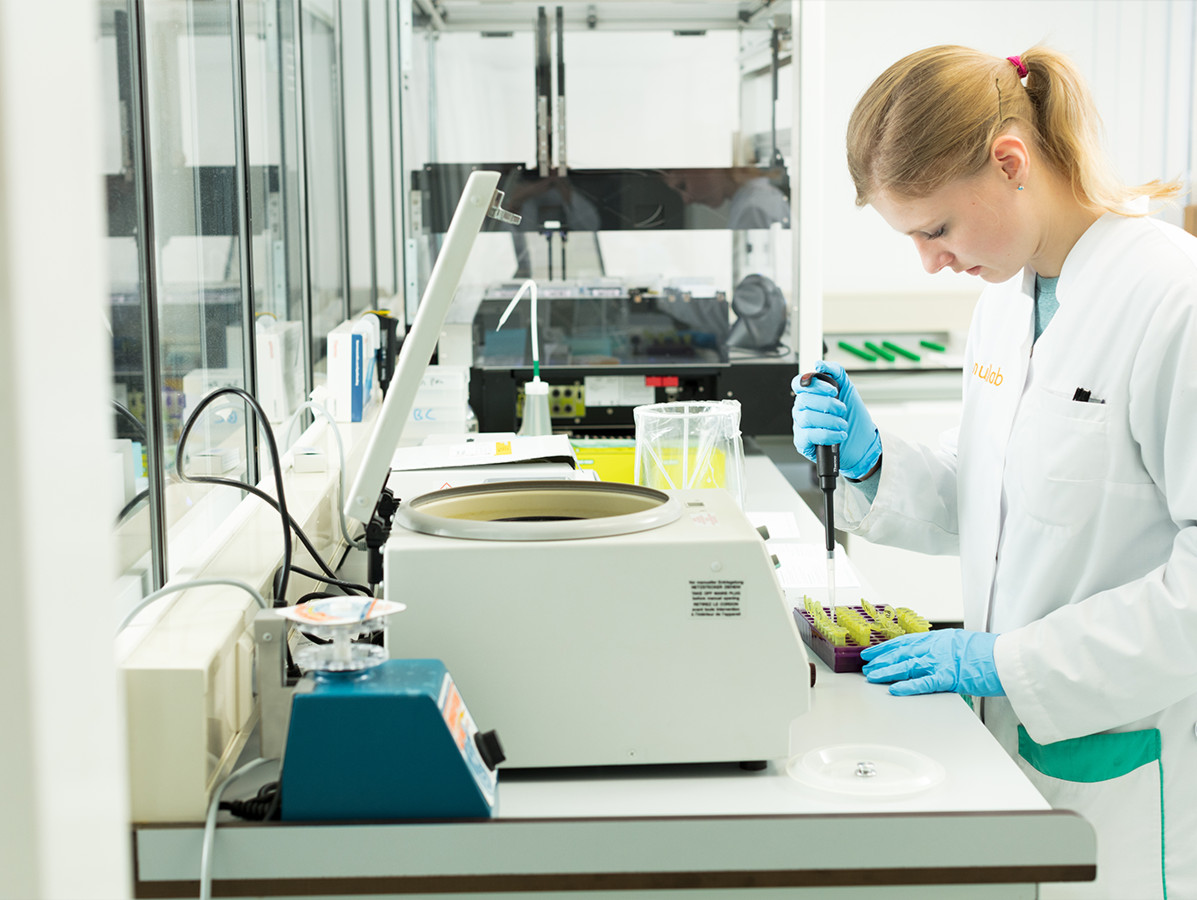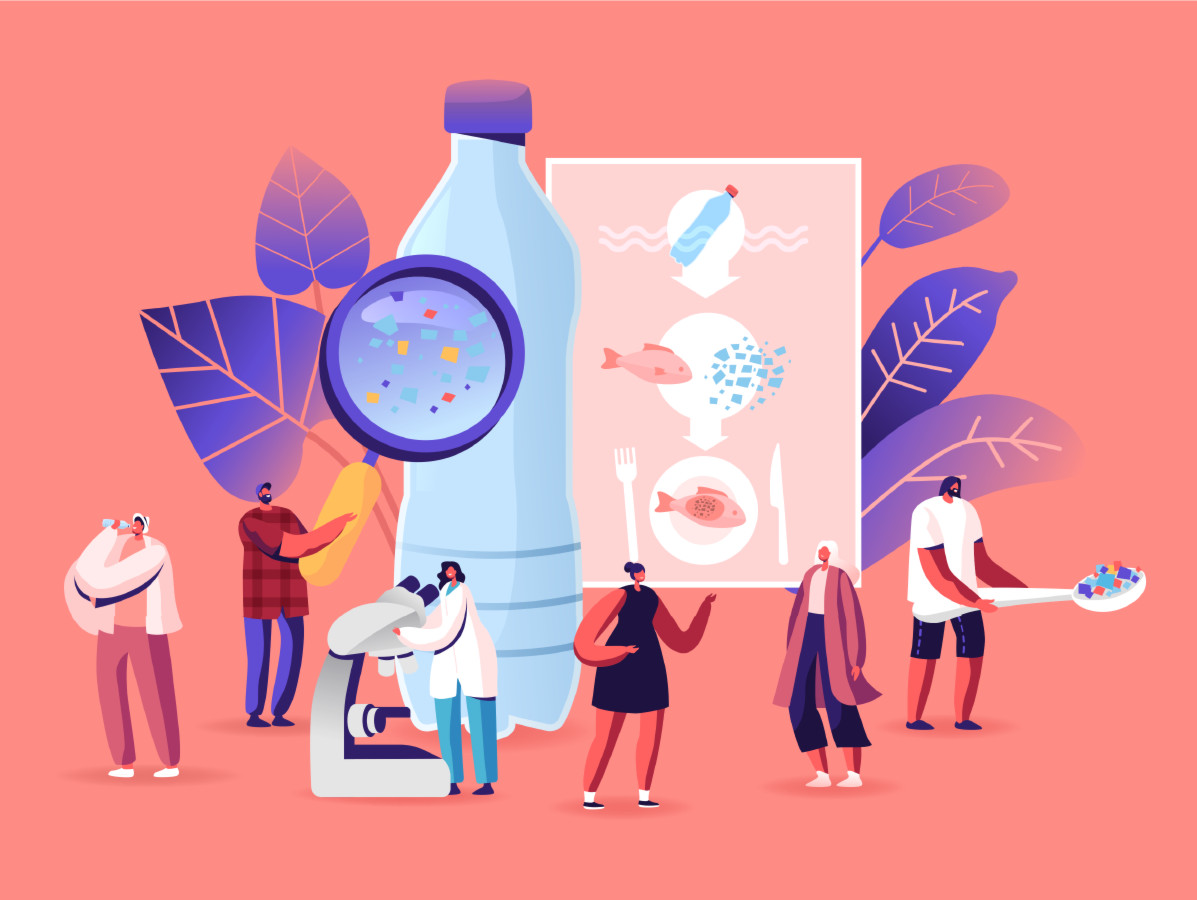
'Improving the understanding of emerging risks should lead to a more robust food safety system, in which companies and authorities are less likely to be surprised and consumers experience less health damage', the Dutch Safety Board stated. In this article, we discuss three potential hazards.
The consumer must be able to trust that the food on his plate is safe. But managing food safety is becoming increasingly complex. Products and raw materials come from all over the world. The focus on new proteins has resulted in all kinds of new products. Consumers want products with a clean label and fewer additives. Production processes are changing, and so are consumption patterns: we are eating more raw vegetables, mixed salads, ready-made meals and new plant-based products. This complexity brings new risks and dangers, but which ones? Three key 'emerging food safety risks' to prepare for: fraud, microbial contamination of plant ingredients and micro-plastics in food.
Food fraud is no new risk, but it is increasingly being observed in various forms. This makes it one of the bigger risks in the field of food safety. The recent scandal with the Verstegen spice jars is yet another grim example of how earning money becomes more important than bringing a food-safe product to the market. Determining the authenticity of food products is also in the spotlight. Under the German Presidency, the European standardisation institute CEN is drafting European standards with analysis methods for determining the authenticity of food products and for detecting possible fraud. In the Netherlands, NEN set up the standards committee 'Food authenticity and fraud' this spring. Through this committee, Dutch experts can contribute to the content of European standards. The work programme includes methods for determining the purity of coffee, coffee products, honey and other bee products, meat and fish, rice, shellfish and herbs and spices. The CEN Committee has working groups that specifically focus on different analytical techniques, such as DNA-based methods, NMR, MALDI-TOF, spectroscopy and isotopic analysis.
The market for plant-based ingredients and dairy alternatives is growing rapidly. Yet little is known about the potential microbial contamination risks of plant proteins, says Marjon Wells-Bennik, Principal Scientist Food Safety at contract research organisation NIZO. "Recent research, largely in collaboration with industry, revealed several microbiological risks," she says. "Plant-based ingredients may contain unknown species and levels of microorganisms, including the spore-forming bacteria Bacillus cereus, B. subtilis, B. amyloliquefaciens, B. licheniformis and Geobacillus stearothermophilus. Some of them produce heat-stable toxins and/or heat-resistant spores that can survive even high heat treatments. Raw materials for plant-based products may also contain low concentrations of heat-resistant fungi."
"In the dairy industry there is one main ingredient: milk. We know all about its characteristic properties such as fat content, nutritional value and microbiological components. We know exactly what to do to make it into food-safe products," Marjon continues. "But the ingredients in plant-based products generally require milder processing than we are used to with milk. You can't heat these 'new proteins' as high as you want to kill off pathogenic bacteria with impunity, because that can adversely affect their functional and/or nutritional properties. The mild processing techniques cannot always inactivate the micro-organisms sufficiently. Producers are now learning about this through trial and error."
What makes ensuring food safety extra difficult is that a huge variety of new ingredients are used for the new plant-based (dairy) alternatives. "Often these are extracts. Take pea protein," Marjon says. "Do you choose grinded pea, pea isolate or pea concentrate for your product? These processes also affect the microbiology. Sometimes potential risks can be mitigated by choosing a protein concentrate obtained from a dry rather than a wet process. Furthermore, it is not always known which bacteria are present in the various ingredients, what the levels are, and how they react to different processing methods or in a formulation. We can test this, and calculate how much inactivation a modification such as longer or higher heating leads to. Perhaps it is necessary to change the pH value or water activity of the product, or to formulate the product differently."
Raymond Kievit, Innovation Manager at NIZO, adds: "To overcome potential microbial risks, quality and safety must be addressed throughout the food chain. From raw material flows, the quality of ingredients, formulation, processing and conditions throughout the distribution chain, up to and including the consumer and how they prepare the product. Companies are increasingly asking us to participate in the design process from the start. We take all these different perspectives into account. In doing so, we help individual companies to accelerate their innovations.
Marjon: "We also work in consortia. We join forces with various companies and knowledge institutions to jointly develop knowledge. Fortunately, there is often a common willingness to work together, even though entrepreneurs are each other's competitors. Food safety is a core need for the entire industry. If one company has a problem with the food safety of its product, it affects the entire market. We also see this consortium approach as very effective for the topic of microbial contamination in plant-based ingredients."

The European Food Safety Authority (EFSA) has recently started to consider micro and nanoplastics as 'a potential threat to food safety'. EFSA acknowledges that consumption of fish and shellfish containing these substances may pose a health risk. "But due to a large lack of data, it is not possible to give a definite answer at this stage," the authority says.
In their 'Statement on microplastics and nanoplastic particles in food', the EFSA states: "Although neither nanoplastics nor microplastics are classified as chemicals, similar effects on the immune system may occur. This depends on the amount of plastic that penetrates the immune system. Nanoplastics can penetrate cells. The consequences of this for human health are unknown. There is currently no method to determine the quantity of nanoplastics in fish or shellfish. To determine the risks of micro and nanoplastics (MNPs) to human health, it is important to fill in the main knowledge gaps. Data on toxicity and behaviour of MNPs in the gastrointestinal tract and data for determining health effects in humans are lacking."
Nutrilab has already developed a method of analysis that enables the lab to detect microplastics in fish and shellfish. And thus, in principle, also in other foodstuffs. Pieter Vos, director of Nutrilab: "The method is ready, but we are not receiving any applications. It is often like that: the technology is further along than the laws and regulations. Only when toxicologists prove that there is real damage to people's health will standards be set. Because our analysis method is so new, and because there are no applications for it, setting up a study is still very expensive. This also prevents companies from providing samples for research into micro-plastics. Nevertheless, we think it is important to remain alert to what can threaten our health. We therefore continue to develop new analysis methods, make them our own and include them in our portfolio. Even if the legislator is not yet ready."
It has already been established that microplastics can penetrate food. Root crops such as carrots, radishes and turnips, and leafy vegetables such as lettuce, appear to be the most vulnerable to contamination by microplastics. This was discovered by Professor Willie Peijnenburg of Leiden University together with Lianzhen Li of the Yanthai Institute of Coastal Zone Research in China. The microplastics can penetrate the roots of lettuce and wheat plants via water, after which they end up in the edible, above-ground parts of the crop. The research was published in July 2020 in the journal Nature Sustainability.
Researcher Margherita Ferrante from the University of Catania also demonstrated the presence of microplastics in fruit and vegetables. Of the vegetables, carrots contain the most microplastics; in the fruit category, it is apples. Her report, which appeared in the journal Environmental Research in 2020, calls for an urgent reconsideration of the effects of microplastics on human health.
In the Netherlands, the consortium MOMENTUM (a collaboration of ZonMw, Health~Holland and TNO) is investing 5.4 million in research into the health effects of micro and nanoplastics. In January 2021, the knowledge agenda 'What do microplastics do in our bodies?' was presented to State Secretary for Infrastructure and Water Management Stientje van Veldhoven. "But first of all, methods must be developed to analyse and measure microplastics in the human body," says a spokesperson for MOMENTUM, "and then we can investigate where in the human body these plastic particles are absorbed.
Meanwhile, the EFSA is not the only one to see microplastics as a threat. Since 1 April 2021, farmers are no longer allowed to use compost with the Keurcompost label issued by the Branche Vereniging Organische Reststoffen (BVOR). The ban was issued by the VVAK (Food and Feed Safety Arable Farming), which certifies agricultural products and ensures that they are not grown on polluted land. VVAK now claims that Keurcompost compost leads to such contamination that arable products grown on it no longer meet food safety standards.
The problem is that there is an increasing amount of plastic in fruit, vegetable and garden waste (VGF) that is collected for composting. According to the Fertilisers Act, one thousand kilos of compost may contain five kilos of plastic. That may not seem much, but plastic is lightweight. The processing sector already imposes standards on itself that are stricter than the law: the Keurcompost quality mark applies a standard that is five times stricter than the law permits: 0.1% plastic contamination. The VVAK considers even this to be insufficient and sets a standard of no more than 0.05%. Answers to parliamentary questions revealed that the government does not want to tighten up the standards. They are referring to European guidelines. Jeroen Dagevos, Head of Programmes at the Plastic Soup Foundation, finds this incomprehensible and calls VVAK's concerns about food safety well-founded. "The new cabinet really has to set a new standard for plastic pollution. Plastic leaks into the environment everywhere. The fact that this is permitted by law is completely outdated.”
Photo lab: © Marcel van Engelenburg/James Media
Vector: © ivector/Shutterstock.com
Source: Vakblad Voedingsindustrie 2021